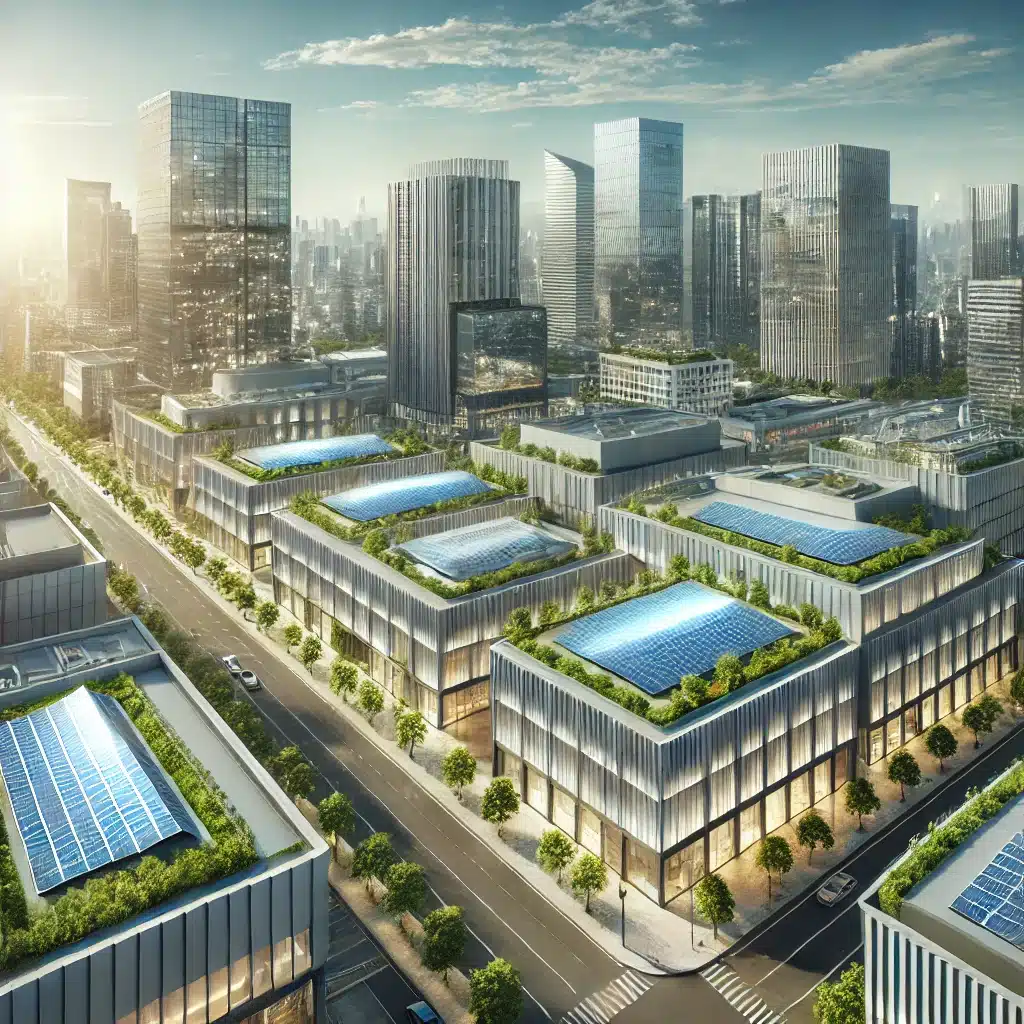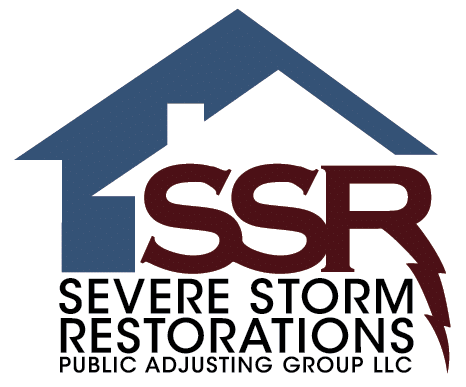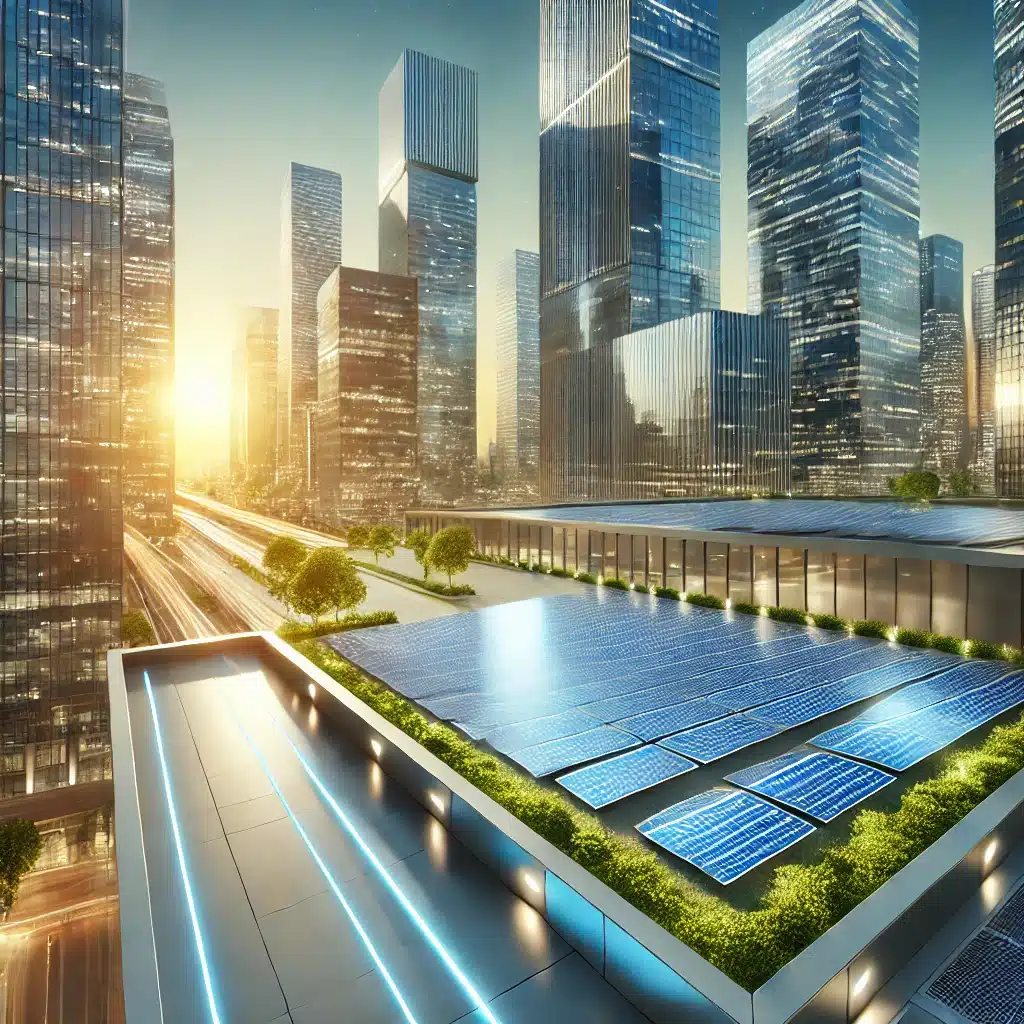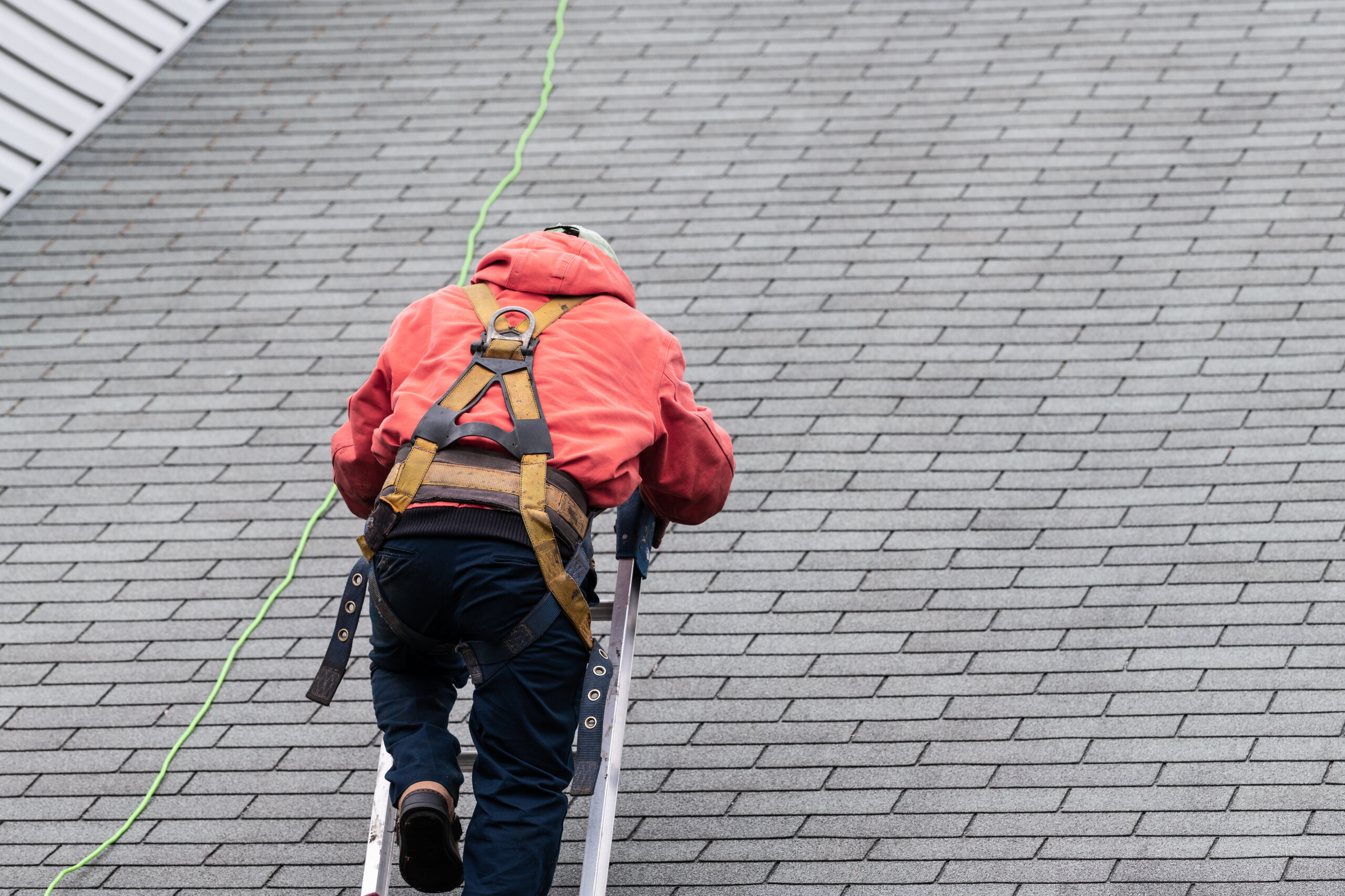As solar roofing becomes an increasingly popular choice for eco-conscious homeowners, maintaining these systems is essential to ensure they operate at peak efficiency throughout the year. Solar roofs harness the sun’s energy to provide clean, renewable power, but they require attention to function optimally. Neglecting maintenance can lead to reduced energy production, costly repairs, and a shorter lifespan for your solar panels.
Regular maintenance is more than just a routine task—it’s a proactive way to protect your investment and maximize the benefits of your solar roofing system. Proper care helps your panels capture the maximum amount of sunlight, ensuring consistent energy output and lowering your reliance on traditional power sources. Additionally, maintaining your solar roof can extend its operational life, allowing you to reap financial and environmental rewards for decades to come.
In this article, we’ll explore the importance of solar roof maintenance, delve into common issues that can impact performance, and provide actionable tips to keep your solar system in optimal condition year-round. Whether you’re a new solar panel owner or looking to enhance the efficiency of your existing system, this guide will equip you with the knowledge you need to make the most of your solar investment.
Why Solar Roof Maintenance Matters
Solar panels are built to withstand various environmental conditions and require minimal upkeep, making them an excellent choice for sustainable energy. However, like any outdoor system, they are continuously exposed to the elements and benefit greatly from regular maintenance. Ensuring proper care not only sustains their performance but also protects your investment.
One major concern is energy loss. Dirt, debris, bird droppings, or accumulated dust can block sunlight from reaching the photovoltaic cells, significantly reducing the efficiency of your solar panels. Even small obstructions can lead to measurable drops in energy production, emphasizing the need for periodic cleaning.
Harsh weather conditions, such as hail, snow, and heavy rain, can also affect your panels’ structural integrity. While solar panels are designed to endure these elements, consistent exposure without checks can lead to microcracks, sealant deterioration, or other hidden damages that compromise their performance over time.
Neglecting maintenance can also shorten the lifespan of your solar roof. Over time, wear and tear from environmental exposure can erode the effectiveness of your panels, leading to costly repairs or replacements. Routine inspections and upkeep help to catch minor issues early, preserving the system’s operational life and ensuring optimal efficiency for decades.
By dedicating time to maintain your solar roof, you ensure it remains a reliable, efficient, and cost-effective energy source, maximizing the environmental and financial benefits of your investment.
Common Issues Affecting Solar Roof Efficiency

Several factors can impact the efficiency and energy production of solar roofing systems, making regular maintenance crucial to ensuring optimal performance. Addressing these issues promptly can prevent long-term damage and maximize energy output.
Dirt and Debris Accumulation
Solar panels rely on unobstructed access to sunlight to generate energy. Accumulated dust, leaves, bird droppings, or other debris can block sunlight from reaching the photovoltaic cells. Even a thin layer of dirt can significantly reduce energy production. Regular cleaning ensures that your panels remain free of obstructions, maintaining peak performance.
Shading from Trees or Nearby Structures
As trees grow or new buildings are constructed nearby, shadows can form on your solar panels. Shading reduces the amount of sunlight hitting the panels, leading to uneven energy production. Over time, even partial shading can affect the overall performance of your system. Regularly trimming trees or strategically placing your panels can help minimize shading issues.
Snow and Ice Buildup
In colder climates, snow and ice accumulation pose unique challenges. A blanket of snow can completely block sunlight, halting energy production until it melts. Additionally, ice buildup can increase the weight load on your roof, potentially straining the structure. Using tools like roof rakes or specialized panel heaters can help mitigate these problems during the winter months.
Damaged Panels or Connections
Cracks, scratches, or impact damage can disrupt the functionality of solar panels. Additionally, wear and tear on electrical connections or wiring can hinder energy flow, reducing the efficiency of your system. Regular inspections can identify these issues early, allowing for repairs before they escalate.
Inverter Issues
The inverter is a critical component of your solar roofing system, converting the energy produced by your panels into usable electricity for your home or business. Over time, inverters can degrade or develop faults, negatively affecting system performance. Monitoring inverter output and addressing any irregularities ensures the consistent operation of your solar panels.
By understanding and addressing these common issues, property owners can maintain the effectiveness of their solar roofing systems and enjoy reliable, sustainable energy for years to come.
Solar Roof Maintenance Tips
1. Regular Cleaning for Maximum Sunlight Exposure
Keeping your solar panels clean is essential for optimal energy production. Dirt, dust, and bird droppings can accumulate over time, creating a barrier between the panels and sunlight. Aim to clean your panels at least twice a year, but consider more frequent cleanings if you live in an area prone to high dust levels, pollen, or bird activity.
When cleaning, use a soft brush, non-abrasive cloth, and water to gently remove debris. Avoid using harsh chemicals or abrasive materials, as these can scratch or damage the panels’ surface. For panels that are difficult to reach, hiring professional cleaners equipped with specialized tools can ensure a thorough and safe cleaning.
2. Trim Surrounding Vegetation
Overgrown trees, bushes, or other vegetation can cast shadows on your solar panels, significantly reducing their efficiency. Regularly inspect the area around your panels to identify any growth that may obstruct sunlight. Trimming branches and maintaining a clear area around your panels not only prevents shading but also reduces the risk of falling debris that could damage the panels. Periodic site assessments ensure your solar panels receive maximum sunlight exposure throughout the year.
3. Inspect for Damage After Severe Weather
Extreme weather events, such as storms, hail, or heavy snow, can cause physical damage to your solar panels. After any severe weather, perform a visual inspection to check for cracks, loose connections, or misaligned panels. Look for signs like shattered glass, dents, or displaced panels that might compromise energy production. If you spot any damage, contact a qualified solar technician immediately to perform repairs and restore your system to full functionality.
4. Monitor System Performance
Most modern solar systems come with monitoring software that tracks energy production and efficiency. Regularly check this data to ensure your system is performing as expected. Sudden or gradual drops in energy output could indicate issues such as dirty panels, shading, or equipment malfunctions. By keeping an eye on performance metrics, you can quickly identify and address potential problems, ensuring your solar system operates at peak efficiency year-round.
5. Maintain Proper Ventilation
Adequate ventilation is crucial for maintaining the efficiency and longevity of your solar panels. Proper airflow beneath the panels helps prevent overheating, which can decrease energy production and stress system components. Check for debris such as leaves, dirt, or bird nests that may block ventilation spaces and remove any obstructions promptly. Ensuring good airflow not only improves efficiency but also contributes to the overall health of your solar roofing system.
Seasonal Maintenance Guidelines

Spring: Addressing Winter Wear and Tear
As winter ends, it’s essential to inspect your solar panels for damage caused by snow, ice, or freezing temperatures. Look for cracks, loose connections, or wear on the panel surfaces that may have occurred during harsh weather conditions. Additionally, clear away any debris that has accumulated during the colder months, such as fallen branches or dirt, to ensure optimal sunlight exposure. A thorough inspection in spring sets the stage for maximum efficiency as the days grow longer and sunnier.
Summer: Managing Heat and Vegetation Growth
In the summer, solar panels can face challenges from extreme heat. While panels are designed to withstand high temperatures, excessive heat can slightly reduce efficiency. Monitor system performance to ensure no significant drops in energy production. Additionally, summer is a time when vegetation grows rapidly, so regularly trim trees and bushes to prevent shading from fast-growing branches. Keeping panels cool and unobstructed during peak sunlight hours ensures consistent energy output.
Fall: Preparing for Winter Challenges
Autumn brings falling leaves that can settle on panels and in gutters, obstructing sunlight and impeding proper drainage. Regularly remove leaves and debris to maintain clear surfaces and prevent blockages. As the season progresses, inspect the panels for any cracks, scratches, or damage that could worsen during the upcoming winter. Proactive maintenance in the fall minimizes the risk of complications during colder months, ensuring your system is ready for winter’s challenges.
Winter: Preventing Snow and Ice Build-Up
During winter, snow and ice accumulation can block sunlight and strain your solar panels. Use a roof rake with a soft head to gently remove snow from the panels without causing damage. Avoid using hot water or heavy tools, as these can crack or warp the panels. Additionally, ensure that any snow removal methods do not compromise the structural integrity of the roof or solar system. A little care during winter can go a long way in preserving your solar roof’s efficiency and longevity.
Extending the Lifespan of Your Solar Inverter
The Importance of Inverter Maintenance
The inverter is the heart of your solar roofing system, responsible for converting the DC electricity generated by your solar panels into AC power used in your home. Proper care and maintenance of the inverter are essential to ensure your solar roofing system operates at peak efficiency and avoids costly replacements. Taking preventive measures can significantly extend the lifespan of this critical component.
Keep It Cool and Protected
Inverters are sensitive to heat, and excessive temperatures can reduce their efficiency and lifespan. Always install the inverter in a shaded, well-ventilated area to prevent overheating. If your inverter is located outdoors, consider a protective cover that allows airflow while shielding it from direct sunlight and harsh weather. Proper placement minimizes wear and helps maintain consistent performance.
Regularly Inspect Connections
Loose or corroded connections can disrupt the inverter’s function and reduce energy production. Periodically inspect the wiring and terminals for signs of damage, corrosion, or wear. Tighten any loose connections and address corrosion promptly by cleaning or replacing the affected components. A well-maintained connection ensures efficient energy transfer and prevents potential failures.
Monitor System Performance
Most modern solar systems come with monitoring apps or platforms that track the performance of your inverter and panels. Use these tools to check energy output regularly and identify any irregularities, such as drops in efficiency or sudden malfunctions. Promptly addressing performance issues can prevent small problems from escalating into significant repairs or system downtime.
Avoid Costly Replacements
Replacing an inverter can be one of the more expensive aspects of maintaining a solar roofing system. By following these care tips—keeping it cool, inspecting connections, and monitoring performance—you can prolong the life of your inverter and ensure your solar system delivers maximum energy production for years to come.
When to Call a Professional
While many solar roofing maintenance tasks can be safely handled by homeowners, certain situations require the expertise of trained professionals to ensure the system’s safety and efficiency. Recognizing when to seek professional assistance can help prevent further damage and protect your investment.
Electrical Issues Require Expertise
If you notice frayed wires, unusual system errors, or inconsistent power output, it’s time to contact a licensed electrician or solar technician. Attempting to fix electrical components without proper training can be dangerous and may void your system’s warranty. Professionals have the tools and expertise to diagnose and resolve electrical issues safely and efficiently.
Address Severe Weather Damage Promptly
After severe weather events like hailstorms, high winds, or heavy snowfall, your solar panels may sustain cracks, scratches, or structural damage. Attempting DIY repairs on damaged panels can worsen the issue or lead to further breakage. A certified solar technician can assess the extent of the damage, recommend appropriate solutions, and ensure repairs meet safety standards.
Schedule Regular Professional Inspections
Even with diligent maintenance, annual professional inspections are essential for maximizing the efficiency and longevity of your solar roofing system. A trained technician can identify hidden issues, such as microcracks in panels or deteriorating wiring, that may not be visible during routine homeowner inspections. Annual check-ups also provide an opportunity to update system settings and ensure compatibility with the latest technology.
Prioritize Professional Support for Long-Term Benefits
Relying on professionals for complex repairs and inspections not only ensures the safety of your solar roofing system but also helps maintain optimal performance. Their expertise can address problems early, reduce the risk of costly replacements, and keep your system operating at peak efficiency year-round.
Benefits of Proper Solar Roof Maintenance

Maximized Energy Production
Clean and well-maintained solar panels ensure optimal sunlight absorption, allowing the system to generate the maximum possible electricity. Dust, debris, and shading can significantly reduce energy output, making regular cleaning and inspection essential. By keeping your panels in top condition, you can decrease your reliance on the grid, lower utility bills, and contribute more renewable energy back to your community.
Extended Lifespan
Routine maintenance helps prevent common issues like cracks, corrosion, or loose connections that can shorten the life of your solar roofing system. A well-cared-for solar roof can last 25–30 years or more, providing consistent energy savings and a strong return on your investment. Addressing minor issues early through regular inspections ensures the system remains durable and reliable over the decades.
Cost Savings
Maintaining your solar roof’s peak efficiency directly translates to cost savings. Efficient panels produce more energy, lowering your dependency on expensive grid electricity. Additionally, regular care reduces the likelihood of costly repairs or replacements by identifying and resolving small problems before they escalate. Over the life of your solar system, these savings can amount to thousands of dollars.
Enhanced Property Value
A well-maintained solar roofing system is an attractive feature for potential buyers, especially those prioritizing energy efficiency and sustainability. Homes equipped with clean, functional solar roofs often command higher resale values and sell faster in the market. This added appeal reflects not only the cost savings but also the environmental benefits that a solar roof provides, making it a valuable asset for homeowners.
Choosing a Reliable Solar Maintenance Service
Experience
Selecting a company with certified technicians and extensive experience in solar system care is essential for proper maintenance. Professionals with a proven track record understand the unique requirements of solar roofing systems, from cleaning delicate panels to troubleshooting electrical issues. Ensure the provider is familiar with your specific type of solar setup, whether it’s traditional panels or integrated solar shingles, to guarantee effective service.
Reputation
A company’s reputation is a strong indicator of the quality of service you can expect. Check online reviews on trusted platforms, such as Google, Yelp, or industry-specific websites. Additionally, ask the provider for references from past clients who have had similar maintenance or repair work done. Positive feedback from satisfied customers can help you feel confident in your choice.
Service Offerings
Choose a provider that offers a full range of solar roof maintenance services to address all potential needs. Comprehensive services should include panel cleaning, performance inspections, electrical repairs, and even inverter checks. Some companies also offer specialized services, such as snow removal or vegetation management, depending on your location. Opting for a one-stop provider simplifies the process and ensures all aspects of your system are professionally maintained.
Conclusion
Solar roof maintenance is a crucial aspect of maximizing energy production and protecting your investment. With regular cleaning, inspections, and proactive care, you can ensure your solar roofing system operates efficiently for decades. By staying vigilant and addressing potential issues promptly, you’ll enjoy lower energy bills, a reduced carbon footprint, and peace of mind.
If you’re ready to elevate your solar roof care routine, consult with a professional maintenance provider to create a tailored plan that suits your system and climate. Taking the time to care for your solar roof today will pay dividends in energy savings and environmental benefits for years to come.



